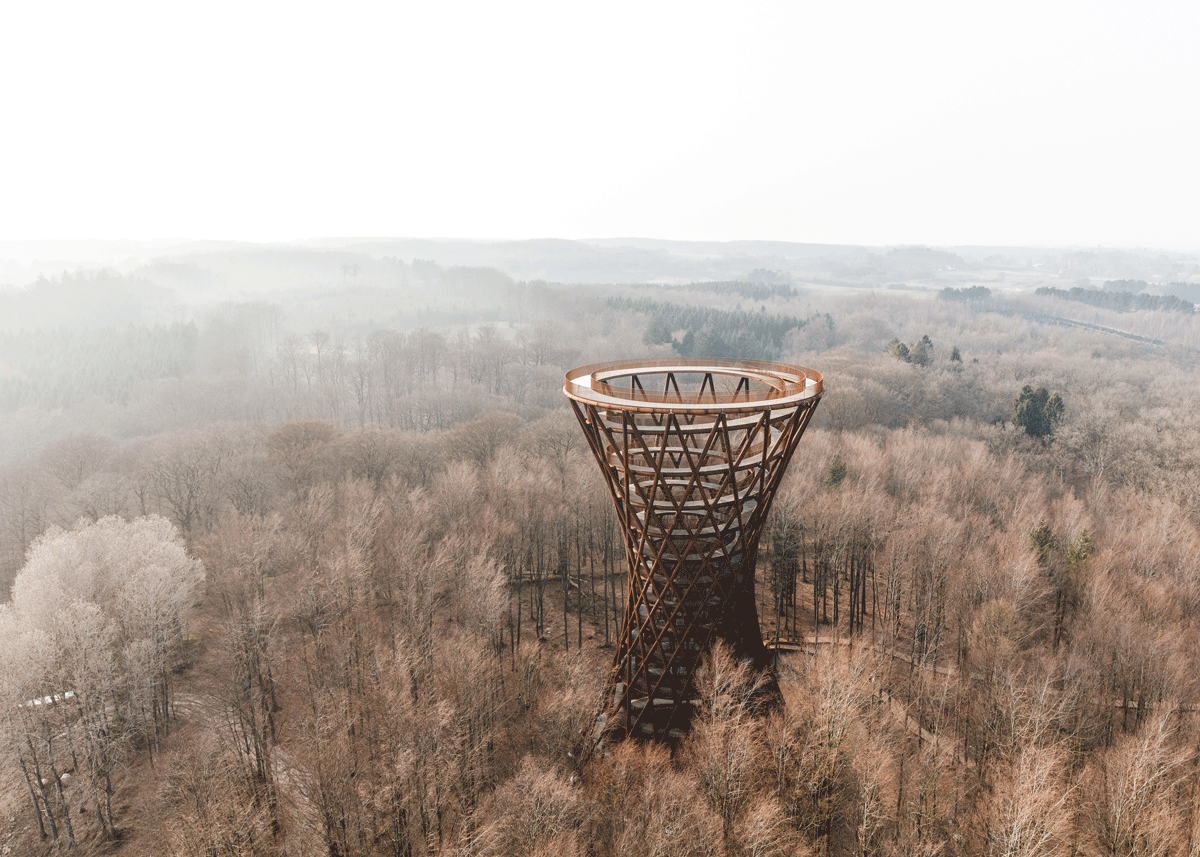Hanoi, Vietnam

The following description and photos are courtesy of VTN
Vinata bamboo pavilion is located in the city center of Hanoi. Innumerable high-rise residential buildings are easy to be seen around the site. The pavilion was planned as a communal space in the garden of one serviced apartment. The site itself is surrounded by 4 tall buildings and the bamboo structure was planned with plenty of greeneries as expected to give a peaceful atmosphere in a highly dense urban area.
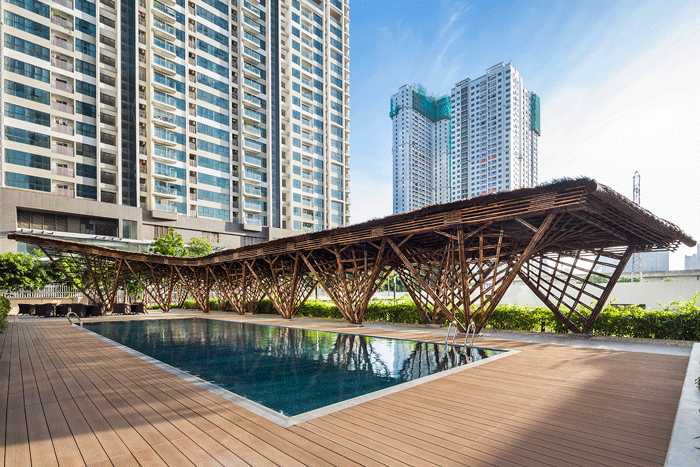
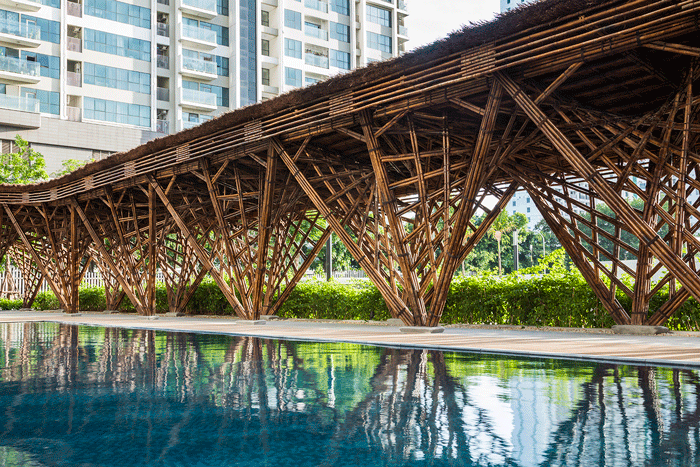
Span of 38m pavilion welcomes guests at the entrance of the site. Guests can access the pavilion from the lobby where they can enjoy the view of the garden and the pool. Bamboo structure and bougainvillea hedge
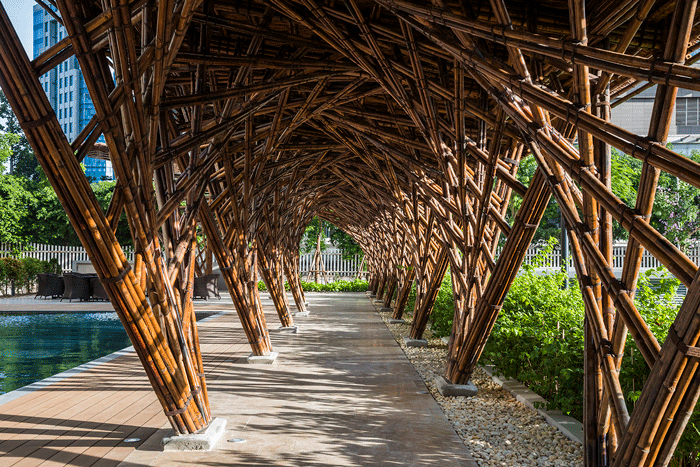
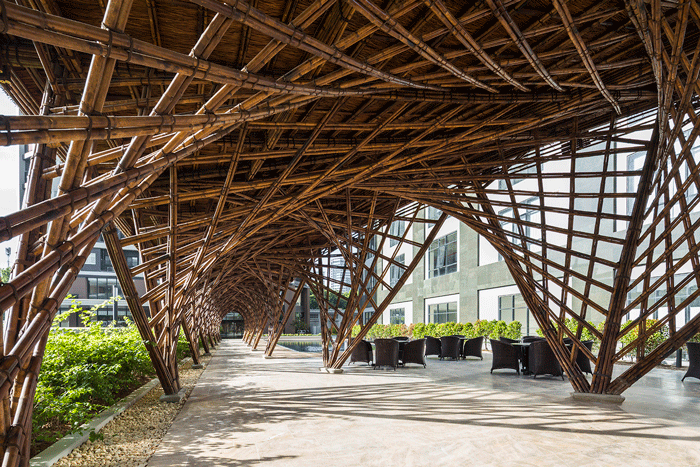
The pavilion is comprised of 14 modules and each one of them is shaped in the combination of two hyperbolic shell structures. The thin bamboo (Tam Vong), which measured only 40 -50 mm in diameters, are assembled by bamboo dowel nail and tightened by rope. Bamboo structure creates the shadows and it continues to the corridor. Gently curved thatched roof (225 sqm) protects guests from the strong sunlight in the tall building area.
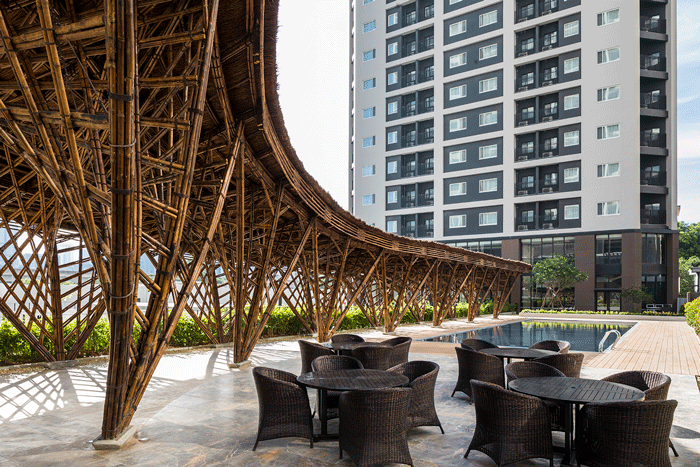
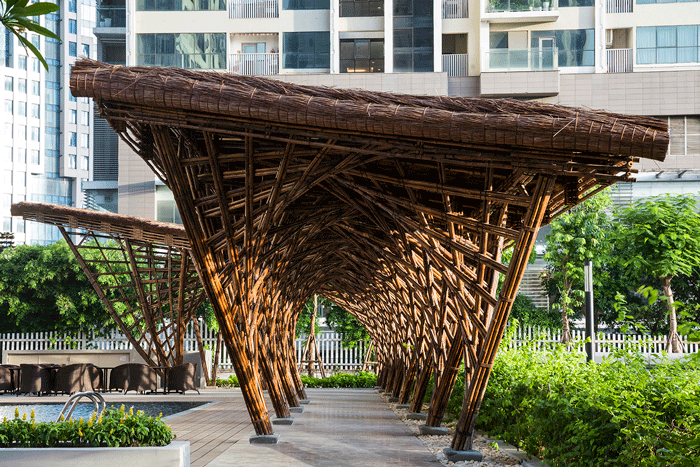
As identically shaped bamboo units gradually grow, it gives excellent contrast with large opening space at the end. It will be used as a social gathering place in the future. The structure is recognizable by pedestrians on the street since its large opening faces to the street.
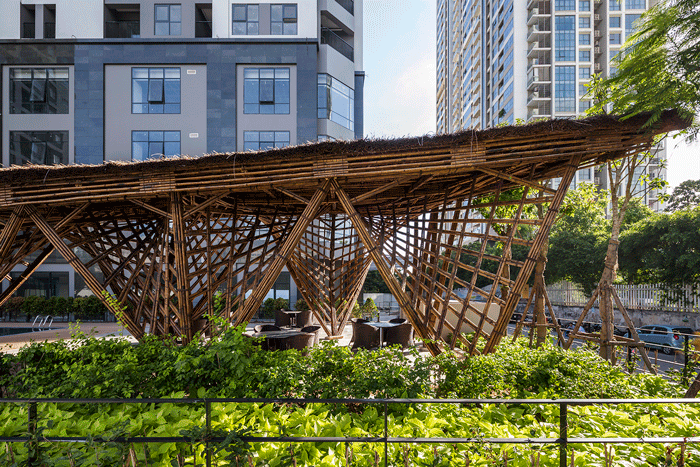
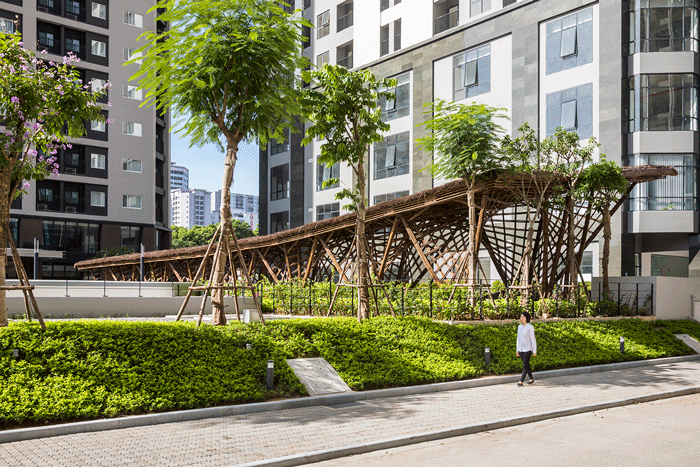

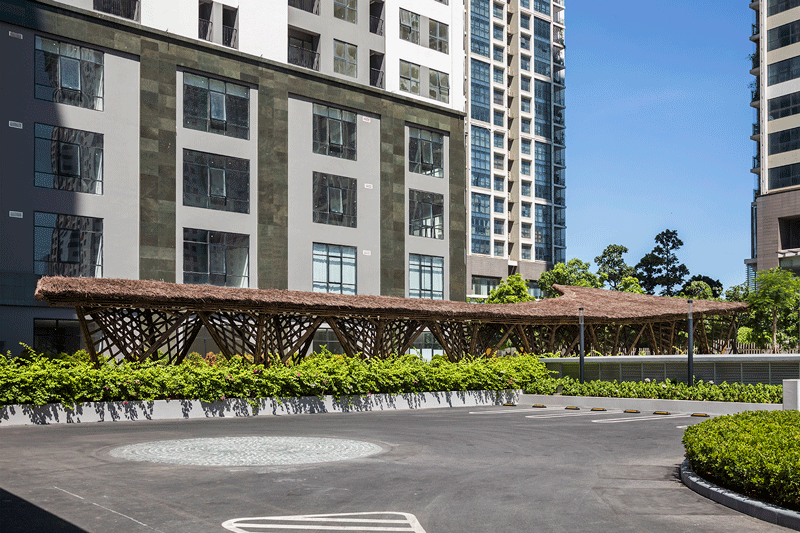
Bamboo pavilion not only provides relax atmosphere to the residents but it is also a landmark of surroundings which is a highly dense area of Hanoi more over it contributes important awareness of environment with nature to inhabitants in the city
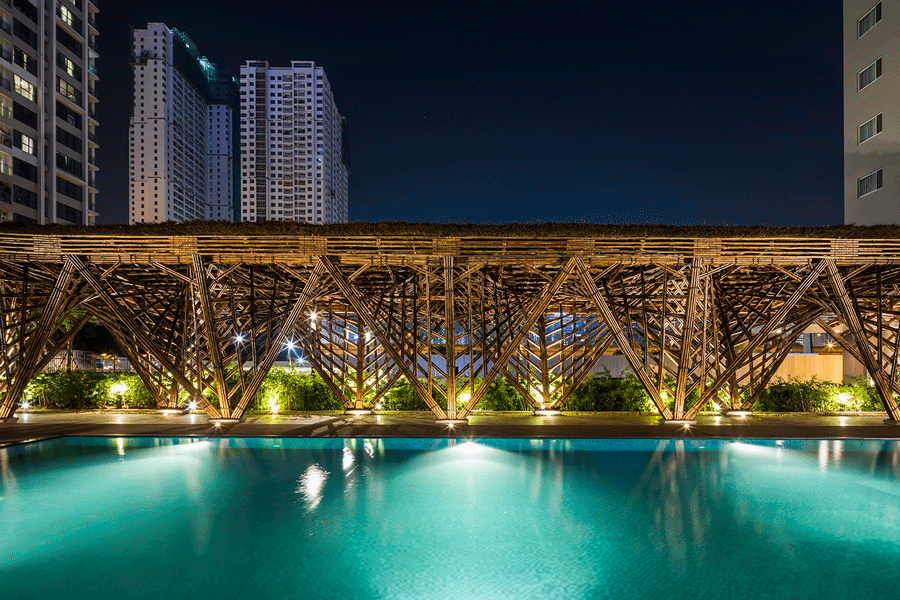
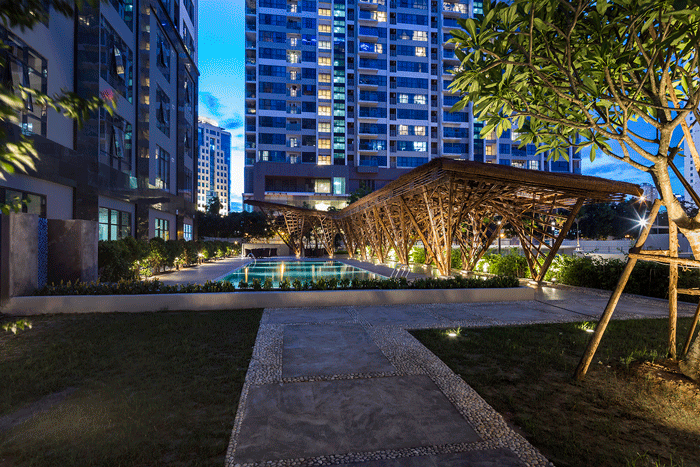
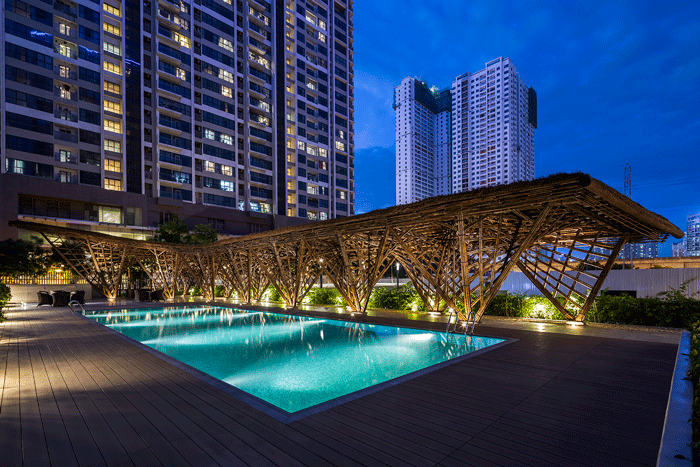
Details
Status: Completion 04.2018
Program: Pavilion
Location: 289 Khuat Duy Tien, Trung Hoa, Cau Giay, Hanoi,
Site area: 825 m2
GFA: 225 m2
Client: TAISEI CORPORATION + Daiwa House Industry Company, Limited
Office credit: VTN Architects (Vo Trong Nghia Architects)
Principal architects: Vo Trong Nghia + Takashi Niwa
Design Team: Koji Yamamoto
Contractor: VTN Architects (Vo Trong Nghia Architects)
Photographs: Hiroyuki Oki


